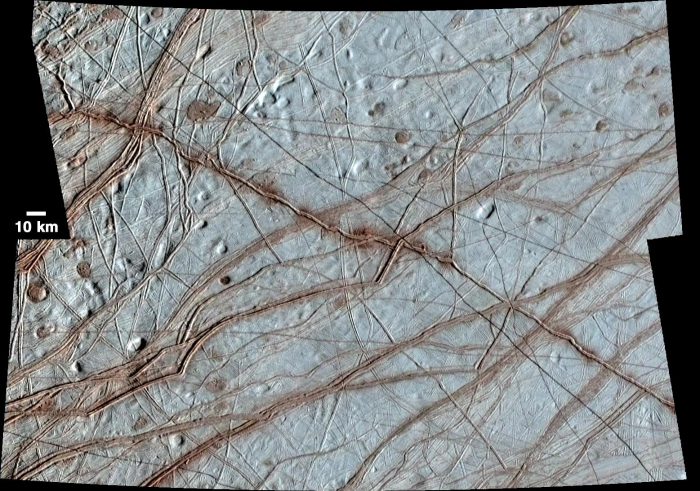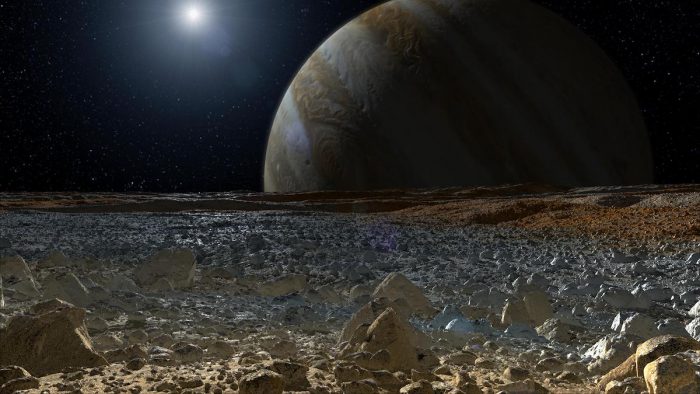Probe Project Passes Review Process
Okay, generally, this is not our idea of a great story. But when the project at hand is one that is destined to investigate possible alien life? Well, sign us up!
That's pretty much where we're at with the Europa Clipper. Now that it has passed key decision-making processes, this probe is expected to launch in the year 2025. Destination? The mysterious moon of Jupiter called Europa. Though it has a thick, icy surface, scientists believe that a surprise may lurk below.
A lively surprise, even.
An ocean world?

A water world? Maybe so... (NASA/JPL-Caltech/University of Arizona)
When we think of an ocean world, we think of, well, Earth! It's called the Blue Planet for a reason — our home is literally covered in water.
So how exactly does a giant ball of ice like Europa qualify as an ocean world? Despite its harsh, frigid exterior, scientists are convinced that underneath it all is a vast, salty ocean of water — one that could be as much as 170 kilometres (105 miles) deep. For context, the deepest point in Earth's oceans — Challenger Deep — is just under 11 km (6.8 miles). Who's the ocean world now, right?
And just how does this water stay liquid under all that ice? Scientists theorize that the water is heated by a combination of energy from Jupiter's immense gravitational forces and possible volcanic vents on the ocean floor. Of course, sending a probe there to investigate would sure help them understand.
Probe for proof

An artist's concept of the Europa Clipper passing over the moon. (NASA/JPL-Caltech)
Enter the Europa Clipper. Experts at NASA have given the go-ahead to this mission, allowing design and construction to begin for real. But the idea of what they want from the Clipper is already pretty set.
The probe will not actually land on Europa, or even orbit it directly. Jupiter has extremely intense belts of radiation surrounding it that are too much for a machine to handle for long periods of time. So the Clipper will instead do a series of fly-bys — orbiting on huge elliptical paths that take it far away from the moon, before seeing it return again and again. (The current Jupiter probe Juno does the same sort of thing.)
As it passes close to Europa's surface, nine different scientific instruments will collect data for scientists to analyze. These include cameras, radar, spectrometers, and a magnetometer. In the end, the hope is that they can understand the depth of the ocean, how salty it is, the thickness of the ice, and... if there's life there.
This is obviously the biggie — the possible lively surprise we referred to. Where there's water and heat, life can exist. Probes to our own ocean depths prove that complex life can be found in the darkest, most remote places. The Europa Clipper probably isn't going to discover that life on this mission. But it's truly bringing us a step closer to knowing!
Watch this video from NASA to understand more about what is at stake.
 The surface of Jupiter's moon Europa sure doesn't look lively. But scientists are excited by what might be underneath. (NASA/JPL-Caltech)
The surface of Jupiter's moon Europa sure doesn't look lively. But scientists are excited by what might be underneath. (NASA/JPL-Caltech)









